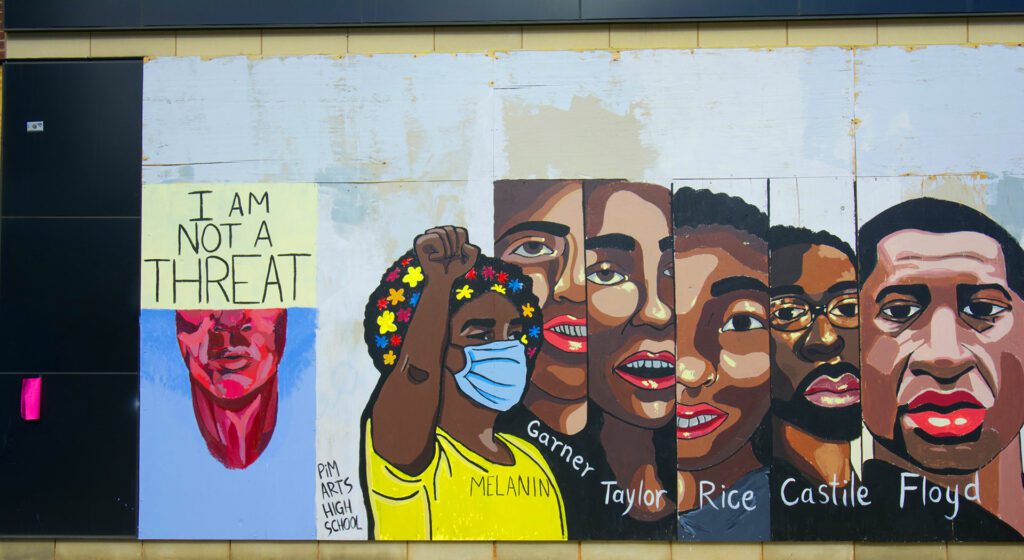4 diversity and inclusion principles from Philip Morris International’s Chief Diversity Officer
Meet the woman rewriting the rules for a new era
Why You Should Care
Philip Morris International is a Fortune 500 company with 73,500 employees worldwide.
Chief Diversity Officer Silke Muenster became a powerful global voice after just six months in the role.
D&I roles have risen by 58% in the past five years, with one-fifth being in leadership positions.
Many agree that this year, with the outbreak of COVID-19 and the murder of George Floyd and others in the United States, a new public consciousness has emerged that has inspired calls for an end to racial injustice and the socioeconomic inequalities that pervade our society.
These events are not only shaping what we want to eradicate from our world—they are also sharpening our focus on the kind of world in which we want to live.
Citizens, consumers, and employees are uniting in favor of a more inclusive, diverse, and equal society. It makes me wonder if this is the watershed moment to propel inclusion and diversity further forward in our social consciousness—and if so, could businesses be the true architects of change?
If the recent increase in corporate hiring of Inclusion & Diversity experts in these last months is anything to go by, I am cautiously optimistic.

However, what may work well in one part of the world does not necessarily translate well in another—and the fragmented national responses to today’s global health crisis are proof of that. So, the question for businesses turning their attention back to Inclusion & Diversity (I&D) is how to successfully implement an ambitious I&D program, and for organizations with a global footprint, how to do it while navigating the complexities of vast cultural differences and dissimilar local contexts.
As Chief Diversity Officer of a Fortune 500 company with 73,500 employees from all over the world, it’s a challenge I have grappled with during these first months in this role. The challenges posed by this new business landscape filled with contradictions include such tasks as balancing more flexible working arrangements with providing staff who wish to continue to work safely from the office—in Hong Kong, Paris, or Cape Town—the option to do so. Or boosting the representation of a specific minority group while recognizing team specificities in other parts of the world. (For instance, increasing female representation on the sales team in Indonesia means hiring a male bodyguard to accompany each female rep on the job.) Or, to take my home country—Germany—it might mean ensuring employees from a migrant background feel they belong.
this starts on the inside, nurturing a diverse range of consumers through Assembling diverse global teams supported by an inclusive working environment
What’s more, as budgets are trimmed amid the current climate and focus on business continuity, I&D leaders must make tough choices and prioritize actions with business goals. We also must adopt an approach that successfully brings employees, consumers, and global citizens along on the I&D journey—wherever you operate.
To me, these four principles are key:
- Everybody benefits from Inclusion and Diversity
Inclusion and diversity is all about the business and employees. By creating an environment that is welcoming and reflective of the world’s diversity, helping everyone to thrive and feel valued, we can help spur innovation and consumer-centricity, which in turn drive business growth. Corporations that cultivate a better understanding of their diverse—and global—consumer base will be better equipped to meet new consumer demands, channeling innovation efforts to capture new growth segments and build and sustain customer loyalty. For any organization—let alone a global multinational—this starts on the inside, nurturing an understanding of a diverse range of consumers through assembling diverse global teams supported by an inclusive working environment, which in turn helps create a more productive and engaged workforce.
An inclusive work environment also enables talented employees to unleash their creativity. And diversity helps to increase the talent pool. So I&D is really all about creating a high performance culture.

- Think global: Act local
Boosting diversity isn’t merely about injecting and developing talent from underrepresented groups. Nor is it about prescribing policies or definitions from head office. Enhancing I&D in a multinational, multicultural environment requires a global mindset that resists the temptation to minimize local cultures and business environments within the organization’s global operating footprint.
A global framework that empowers local teams to adapt the approach helps secure buy-in and boosts its chances of success. Flexibility is key—in focus and delivery. Today we see this spirit adopted by companies like Siemens, Telenor, and others regarding flexible working arrangements. I’m proud that PMI is among those companies that will offer employees who can perform their jobs remotely the option to do so through our forthcoming Smart Work hybrid model of remote and office-based work where permissible under local law.
The basis for a globally-inclusive culture is the willingness and ability to have uncomfortable discussions.
- Pushing through discomfort
The basis for a globally-inclusive culture is the willingness and ability to have uncomfortable discussions. The essence of L&D is not about always agreeing with each other, but about the ability to listen to different perspectives and act upon it. As Michelle Obama recently noted, making progress toward a more inclusive, socially just society is “up to all of us, no matter what we look like or where we come from. […] It starts with self-examination and listening to those whose lives are different from our own.”
Many businesses are stepping up to the challenge of creating a safe space for conversations on important topics—like race or LGBTQ+ rights—and PMI is one of those, with our launch of an Inclusive Conversation series to raise awareness and understanding. Long overdue, we also have, or are setting up, Employee Resource Groups (ERGs) including on ethnic and racial diversity, LGBTQ+ inclusion, women and disability as part of our commitment to increasing employee engagement and demonstrating the value of our I&D efforts. ERG´s inclusive conversations create the base for a better understanding of the different perspectives and the complexity and importance of these topics. Only with this understanding can we value the difference’s diversity brings.
- Being intentionally inclusive
Language shapes culture, and culture shapes the global dialogue. Therefore, being more intentionally inclusive in our communications—as individuals, leaders, in teams, and outside of work—can help guide progress. In a global organization, ensuring our lexicon is inclusive enables us to reach a wider audience. This begins on a personal level by enhancing our understanding of the terminology we use and by eliminating words and phrases that may be hurtful. Inclusive conversations also involves who has the mic and creating platforms to ensure diverse voices are heard across the organization.
I am optimistic that the steps we take today will create lasting change. And I am committed to driving and guiding that change, both at PMI and beyond, on a global scale. At PMI, our vision is to create a smoke-free future and a better world for smokers. As a business with global reach, we can give voice to often-marginalized groups and change hearts, minds, and perceptions—person-by-person, conversation-by-conversation, action-by-action—to help create a better, fairer, more just world.
How do we get there? With passion, perseverance and—most of all—patience. Progress doesn’t happen overnight. As this expert points out, driving inclusion and diversity isn’t a program; it’s a process. A business and employee-driven focus, a “glocal” approach, courageous conversations, and inclusive communications will help businesses and society get where we want to be, creating a culture and society of openness and diversity that fosters creativity and agility—and a proud legacy for generations to come.
Sign up to the UNLEASH Newsletter
Get the Editor’s picks of the week delivered straight to your inbox!
